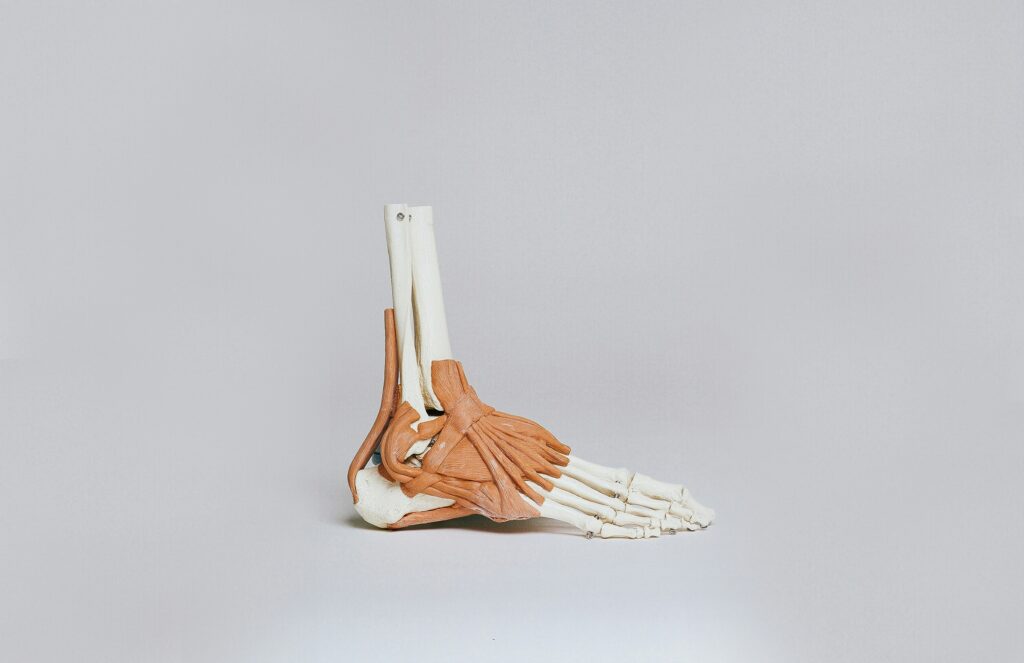Ankle sprains can be a real pain and limit your ability to do even the most simple tasks. The early stages of your recovery are important to provide you with the best outcome. The early phase of recovery focuses on fostering healing while gradually re-introducing movement and weight-bearing activities.
Let’s delve into the key areas of early ankle sprain recovery.

Early Weight Bearing With Support:
Research advocates for early weight-bearing however this is within tolerable limits. This means if you are able to walk, even with a limp, it is ok to do so. If the pain is still too strong you can try using crutches to take additional weight off the foot as you walk. While you have the crutches try to put a little bit of extra weight through the foot each day until you can remove the crutches completely. At times, more severe ankle sprains may benefit from external support and we’ll discuss this next.
Types of External Support:
If you have a more severe ankle sprain, lace-up bracing may be appropriate to allow you to simple activities over the day. External bracing can also help with short-term swelling. There are several types of external supports you can use that vary in the degree of stability provided. The most stable of these supports is a camboot. A camboot will position your ankle in a set position and prevent any movement while in use. You can walk if comfortable enough when you wear a camboot. A less restrictive form of external support is ankle lace-up ankle brace. These braces provide a strong support to the ankle however allow some motion of the ankle. These braces can be utilised later to assist with a return to sporting activities. If swelling is the main issue, you can utilise an elastic sleeve that compresses around the ankle. These are great at reducing excessive swelling however provide the least amount of external stability to the ankle.
Manual Therapy:
Incorporating manual therapy into treatment offers promising results. A session of manual therapy, which may include soft tissue massage, joint mobilisation, and lymphatic drainage, has shown to improvement swelling and pain in individuals with acute ankle sprains. Low-grade accessory joint mobilisation procedures, such as posterior glide of the talus relative to the tibia and fibula, can facilitated full ankle dorsiflexion, which the ankle motion required for a normal walking pattern.
Ice packs:
There is currently is a lack of good quality research regarding ice and managing an ankle sprain. However regarding soft tissue injuries ice packs can help reduce pain, improve weight-bearing ability and decrease the need for pain medication. Ice can be applied intermittently, and is typically suggested to be placed on for 15-20 minutes at a time.
Ultrasound:
Recent large studies indicate that ultrasound does not provide benefits to managing ankle sprains. As a result, it is not a treatment that is highly recommended and there are many other more beneficial treatments that you can commence.
Exercises:
Multiple studies have shown significant improvements in lower limb function and functional ability when exercises are added to management for an ankle acute sprain. Programs that incorporate active range of motion exercises, resistive exercise and weight-bearing exercises have shown to be of particular benefit. These exercises can be tailored based on the severity of your ankle sprain. Exercises become a significant aspect of late stage recovery for ankle sprains, leading to decreased recurrence rates, and you can check these exercises out in our next article.
Summary:
Overall, to help your ankle sprain it is advised to utilise external ankle supports while gradually resuming weight-bearing activities on the affected ankle. Adding manual therapy to your recovery should be completed early on to assist with pain reduction and better range of motion. Rehabilitation programs should include light, comfortable ankle exercises that promote better weight-bearing ability.
By incorporating these insights and recommendations, individuals can navigate the early phase of ankle sprain recovery with confidence, paving the path towards a successful recovery and return to normal activities.